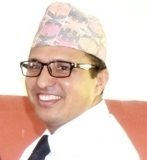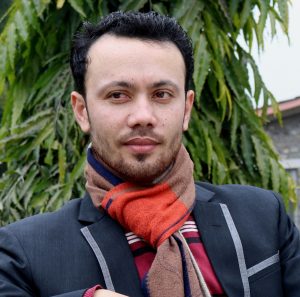
Introduction
Students in higher education are supposed to write different forms of assignments during their studies such as essays, research papers, dissertations, articles, reports, etc. These assignments are commonly referred to as “academic writing” which follows certain conventions of structure, style and content. Through academic writing, scholars communicate with other scholars in their fields of study, their disciplines. Academic writing is a style of writing that is objective, unbiased, and focuses on supporting information with credible data and evidence. Furthermore, it is geared toward contributing to the body of knowledge on a topic or field of study. The language in academic texts tends to be “precise, impersonal and objective” (Hartley, 2008, p.3) in the sense that the writer avoids value judgments and biases and uses formal vocabulary, and references. As the academic writing is characterized by evidence-based arguments, precise word choice, logical organization, and an impersonal tone (Valdes, 2020), it allows researchers and students to contribute to the area of knowledge and academic debate. In this connection, this essay intends to introduce the voice of author in academic writing and discuss the concept of author identity from social perspective.
Voice of Author in Academic Writing
Students in higher education face several challenges in learning academic writing in Nepali and other contexts. University students with no prior experience of academic writing generally follow the models of academic style from the previous studies. It sometimes results the loss of students’ voice in their writing and also leads to other unethical issues such as copyright infringement and plagiarism. Morita (2000) points out that student’s linguistic, sociocultural and psychological difficulties affect their engagement in the classroom. One of her indications is that students’ academic entry in a new community also influences their academic performance. For the research level students, to create an impression of an academic writer drawing on certain discursive and non-discursive features in a particular piece of writing has been a real challenge in the beginning years in higher education institutions.
Academic writing carries the voice of writer following certain styles and established writing conventions. If we understand produced texts especially in higher education as social interactions, then constructing a ‘recognizable’ and authoritative identity in academic writing involves students dealing with the competing claims of individual creativity and knowledge on the one hand and the sets of values, attitudes to knowledge and linguistic forms embodied in the discourse of their discipline on the other (Morton & Storch, 2019). On the issue of the voice, Guerin and Green (2012) emphasize the importance of developing a strong authorial presence in doctoral writing. It obviously marks the shift from student writer to a writer that can position their research authoritatively within their discipline. Therefore, the identity is not optional in all academic writing; all texts say something about the writer, their position or the point of view, carry authorial voice, and use some textual features, although some are more marked than others.
In academic writing, it is important not only to present ideas, facts, and conclusions but to also have a stance of the writer. When a student writer is able to consistently communicate that particular point of view in their writing, they are using their voice. To establish credibility in the writing, it is necessary for writers’ opinions to be based on evidence rather than unsupported generalizations. In most academic writing, it is also necessary to express one’s voice in which the writer is synthesizing literature, developing theories or conceptual frameworks, and most importantly, advancing a new perspective. The voice of the writer can also be expressed in research papers, particularly in the discussion section as the writer makes the transition from the study’s results to arguments and conclusions. In doing so, many writers especially beginners in academic writing bury their voice in quotes from more established researchers. Although the ideas may be based on existing literature, the conclusions need to be based on writer’s original thoughts which clearly communicate his or her point of view or the stance (Brown, 2014).
Many writing scholars describe writing as a mode of identity expression. In this line, Hyland (2002a) describes academic writing as not simply an expression of content, but also a “representation of self”. In the similar line, Williams (2003) portrays writing as a reflection of the person on the page and writing is a deliberate construction and expression of identity on a page. It indicates how writer identity is interconnected with the expression in the text. Teaching writing through the lens of identity could help student writers understand how they can develop, express, and organize their unique thoughts and analytical stances on topics (Williams, 2006b). This understanding of students’ perceptions of themselves as writers is an important first step in developing academic writing and writer’s self in their writing.
Author Identity
To discuss author identity, it can fairly be helpful to reflect on who I am as I write research papers, journal articles and academic blog pieces. When I write those papers, I am bringing to varieties of commitments based on my interests, values and beliefs which are built up from my own academic history as an academic writer and research level student. In this regard, I am not a neutral being conveying the objective results of my research papers in my writing. I am someone who has been engaged with the larger academic community in Nepal for a decade. I have been writing and researching in the areas of language teaching, academic writing and education for a decade. I am a writer with a multiple social identity. I have an idea of the sort of person I want to appear in the pages of my research papers and other type of articles: ethical, insightful, critical, original and committed. I think I not only want to meet the requirements of writing of publishers, but also want to be a member of the academic discourse community. Therefore, I want to appear ethical, insightful, critical, original and committed in my writing that specify my academic, social and authorial roles and identities.
This essay, for example, might involve among other things, what I have read and heard about author identity, my disciplinary backgrounds, my previous experience in presenting and discussing ideas about identity in writing, and my interest in identity in academic writing. Furthermore, in this written paper, I am also constructing the voice of an academic writer by drawing on certain discursive features such as nominalization, use of hedges and boosters, reporting verbs, APA style citations, self-mention, and nondiscursive features, such as the choice of topic, description of research setting and the attention to historical details which creates the impression of an academic writer.
When people are producing texts, they are not only doing writing–presenting ideas in textual form –but are also being writers –creating a variety of meanings in the writing context (Rahimivanda & Kuhi, 2014). Being writers when they produce text, they are not assembling words and phrases, rather they carry their voice in the text following certain styles and established writing conventions. Through writing, researchers and writers instigate academic conversations in the academic community. While making social interactions, the writers do not make the collection of ideas in the text, they are the people who create different meanings out of them in a particular context. And the text becomes a place where knowledge and writer’s identities are constructed.
In understanding identity in written discourse, it is important to distinguish between the identity positions of the writer that is external to discourse, such as the demographic information, and identity as constructed and negotiated through discourse. Although these two aspects of identity are inextricably tied to each other, my writing is mainly guided by the contemporary approaches to identity in written discourse, not as the material reality projected through writing but as a social construct that is mediated by written discourse. In other words, identity does not just reside in the text, it is not simply the sum of textual features, rather it is a social construct created in the complex interaction among various elements of writing (Silva, 1990), including the relationship between the writer and the reader, who interact through the text in a particular situational context (Hyland, 2008a). It evidently indicates that studying author identity in academic writing discourse requires not just an understanding of textual features but the perceptions and experiences of identity both by writers and readers.
Defining author identity, Pittam et al. (2009) say it is the sense a writer has of themselves as an author and the textual identity they construct in their writing. The simple meaning it implies that author’s sense of himself or herself as an author in the text construct his or her author identity. However, the definition excludes the social aspects of the writing such as interaction with readers mediated through the produced text. Thus, defining identity in written discourse has not been an easy task because the conception of voice has evolved drastically over the last few decades and because the shift has been a gradual and layered process, with multiple definitions coexisting (Matsuda, 2015).
Ivanic’s Framework of Author Identity
Despite the existence of various definitions, Ivanic (1998) provides a useful, overarching framework for understanding identity in writing. For him, identity is a plural, dynamic concept encompassing four interrelated strands of selfhood or writer identity: autobiographical self, discoursal self, self as author and possibilities for selfhood.
The autobiographical self refers to the writer’s sense of self—a writer’s sense of their roots, of where they are coming from—which is socially constructed. In other words, what a writer brings into his or her act of writing is an autobiographical self. It is historically constructed and shaped by the past experiences and literacy practices with which he or she has been familiar with. Discoursal self is the self-representation in texts, which emerges from the text that a writer creates. It is constructed through the discourse characteristics of a text that reflects values, beliefs and power relations in the social context in which they were written. Therefore, the impression is created through the features of written discourse, which is also referred to as voice (Matsuda, 2001). The self as author is an aspect of the discoursal self, is the sense of being the author that the writer perceives and projects in written discourse. It is a sense of authorial identity that the writer develops and is perceived by the readers. The same piece of writing may be valued and assessed differently depending on the level of confidence and authority that is projected by the writer and perceived by the reader.
Ivanic (1998) makes clear that these aspects of writer identity are neither completely discrete nor mutually exclusive. They are also both enabled and constrained by the possibilities for self-hood, socially available identity options and discursive resources. It refers that the discourse is not just a set of textual features but it embodies socially shared assumptions and practices that allow people to construct their identity or ways of being in society. Those resources may include various discourse features and argumentative strategies from various genres that enable the writer to construct a sense of identity appropriate for the situation. These four elements are intertwined to make up the concept of a ‘writerly self’ (Starfield, 2007), an author identity in writing. For Ivanič and many other scholars, all aspects of writer identity are emerging and changing over time as well as socially constructed.
Thus, the writer’s identity does not singularly reside in the writer, the text, or the reader; rather identity is part of the interpersonal meaning that is negotiated through the interaction among the writer and the reader mediated by the text. Despite several definitions, contemporary definitions of writer identity in the literature seem to be converging as the identity in written discourse is multiple and dynamic which is constructed through socially shared resources for meaning making.
Author Identity as a Social Construct
The writer identity has become an important area of investigation in the literature. Identity had been an important consideration in North American writing studies since the 1960s; however, the concept of writer identity has not been included in the descriptions of written discourse in applied linguistics. Roz Ivaniˇc (1998) was among the first to articulate the role of identity in academic writing and he provides an overarching framework for understanding identity in academic writing. Hyland (2000) calls attention to the importance of interpersonal meaning in shaping interactions in academic writing genres, paving the way for studies of social identity in academic writing. However, because of the dominance of the individualistic view of writer identity, the study of identity in academic writing did not receive a major focus of research.
In 2001, the Journal of Second Language Writing published a special issue on voice (Belcher & Hirvela, 2001). Some scholars (e.g. Stapleton, 2002) argued that the place of voice was overstated in the literature and called for a shift of emphasis to topics that were more important for academic writing, such as ideas and argument. Nevertheless, many researchers continued their efforts to focus even more on voice in academic writing. Matsuda (2001) states the voice as “the amalgamative effect of the use of discursive and non-discursive features that language users choose, deliberately or otherwise, from socially available yet ever-changing repertoire” (p. 40). This definition of voice in the written discourse as the effect recognizes the role of the reader as well as the writer and the text. In 2007 and 2009, Matsuda and Tardy examined the construction of an author’s discursive identity and concluded that the images of the author were triggered by both discursive features (e.g., signs of author’s language background, sentence structures, careful editing, and writing style) and nondiscursive features (e.g., breadth and depth of knowledge, topic choice, representation of the field, description of the research setting, theoretical framework, and research method). It indicates that author identity is not only constructed solely in the text, it is also created by the readers who go through the text.
Matsuda (2015) very notably, states that identity in written discourse involves both empirical reality that can be described and measured e.g., demographics and textual features and phenomenological reality that exists in people’s perceptions e.g., social constructs. In this connection, text-oriented approaches of writer identity are useful in describing how identity is manifested through textual features. However, an understanding of identity is not complete without a consideration of the writer’s choices as well as the readers’ perceptions that is triggered by various discursive and non-discursive features. Thus, the focus of analysis in the literature has shifted from the individual to the social conventions and how it has been moving toward the negotiation of individual and social perspectives.
Conclusion
The literature supports that identity in written discourse is a complex phenomenon, as it involves both empirical and phenomenological realities. Moreover, identity in written discourse is not external to discourse, it is not simply the sum of textual features, rather it is a social construct, a text mediated interaction between the writer and the reader in a particular situational context. Therefore, understanding identity in academic writing requires not just an understanding of textual features but the perceptions and experiences of identity both by writers and readers.
The author: Ashok Raj Khati is a PhD student at the Faculty of Education, Far Western University Nepal. He is also associated with Sainik Awasiya Mahavidyalaya (Military residential college run by Nepal Army) located in Kailali district where he serves the institution in the capacity of the principal.
References
Belcher, D., & Hirvela, A. (eds.). (2001). Voice in second language writing [Special issue]. Journal of Second Language Writing, 10(4), 227–322.
Brown, A. B. (2014, April 16). Hiding in plain sight: The problem of authority for academic authors [Web log post]. Retrieved from http://www.academiccoachingandwriting.org /academic-writing/academic-writing-blog/iii-hidingin-plain-sight-the-problem-of-authority-for-academic-authors
Guerin, C., & Green, I. (2012). Voice as a threshold concept in doctoral writing. Narratives of transition: Perspectives of research leaders, educators and postgraduates, Conference proceedings of 10th Quality in Postgraduate Research Conference.
Hartley, J. (2008). Academic writing and publishing. London: Routledge.
Hyland, K. (2000). Disciplinary discourses: Social interactions in academic writing. NY: Longman.
Hyland, K. (2002a.). Authority and invisibility: authorial identity in academic writing. Journal of Pragmatics, 34(8), 1091–1112.
Hyland, K. (2008a). Disciplinary voices: Interactions in research writing. English Text Construction, 1(1), 5–22.
Ivanic, R. (1998).Writing and identity: The discoursal construction of identity in academic writing. Amsterdam: John Benjamins.
Matsuda, P. K. (2001). Voice in Japanese written discourse: Implications for second language writing. Journal of Second Language Writing, 10, 35–53.
Matsuda, P. K., & Tardy, C. M. (2007). Voice in academic writing: The rhetorical construction of author identity in blind manuscript review. English for Specific Purposes, 26, 235–249.
Matsuda, P. K. (2015). Identity in written discourse. Annual Review of Applied Linguistics, 35, 140–159.
McKinley, J. (2017). Identity construction in learning English academic writing in a Japanese university. The Journal of Asia TEFL, 14 (2), 228-243.
Morton, J. & Storch, N. (2019). Developing an authorial voice in PhD multilingual student writing: The reader’s perspective. Journal of second language writing, 43, pp. 15-23.
Pittam, G., Elander, J., Lusher, J., Fox, P., & Payne, N. (2009). Student beliefs and attitudes about authorial identity in academic writing. Studies in Higher Education, 34(2), 153-170.
Rahimivanda, M. & Kuhi, D. (2014). An Exploration of Discoursal Construction of Identity in Academic Writing. Procedia-Social and Behavioral Sciences 98, 1492-1501.
Silva, T. (1990). Second language composition instruction: Developments, issues and directions in ESL. In Barbara Kroll (ed.), Second language writing: Research insights for the classroom (pp. 11–23). New York, NY: Cambridge University Press.
Stapleton, P. (2002). Critiquing voice as a viable pedagogical tool in L2 writing: Returning the spotlight to ideas. Journal of Second Language Writing, 11, 177–190.
Starfield, S. (2007). New directions in student academic writing. In J. Cummins and C. Davison (Eds). The International Handbook of English Language Teaching, 2, 875-890.
Valdes, O. (2020, August 27). An Introduction to Academic Writing. Retrieved from https://www.thoughtco.com/what-is-academic-writing-1689052
Williams, B. T. (2003). The face in the mirror. Journal of Adolescent & Adult Literacy. 47(2), 178-182.
Williams, B. T. (2006b). Metamorphosis hurts: Resistant students and myths of transformation. Journal of Adolescent & Adult Literacy, 50(2), 148–153.







